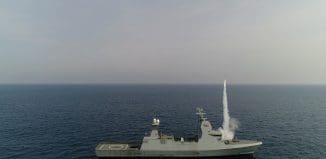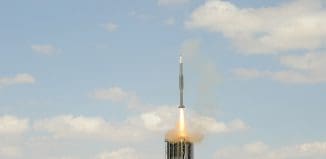Unmanned Missile Defense Platform Sought
This post is also available in:  עברית (Hebrew)
עברית (Hebrew)
An unmanned air system (UAS) is sought by the US as a missile defense platform, with the payload and range capability of today’s manned U-2S.
The US Missile Defense Agency has recently released specifications for its next top priority: a high-altitude, long-endurance UAS that uses a high-energy laser weapon to shoot down ballistic missiles within seconds of launching.
The MDA released the RFI to identify options for aircraft that can carry such a weapon in the 2023 timeframe. Although an unmanned aircraft is preferred, the agency is open-minded about using manned aircraft.
According to flightglobal.com, MDA’s performance requirements appear to rule out any known UAS in existence, including all versions of the Northrop Grumman RQ-4 Global Hawk. In particular, the MDA’s request for information call for an aircraft that can carry at least 2,270kg (5,000lb) of payload and as much as 5,440kg (12,500lb) at altitudes higher than 63,000ft.
Lockheed has released a series of proposals to develop an unmanned version of the U-2S dating back to the late 1990s, when it offered the unmanned “U-2U” design as an alternative to the RQ-4 to the USAF for high-altitude reconnaissance.
In 2014, Lockheed’s Skunk Works team again revived a concept for an unmanned version of the U-2, but withdrew the concept in favour of the stealthy, unmanned TR-X concept.
The redesigned U-2 fuselage for the optionally-manned variant extended mission duration up to 20h with a range up to 6,510nm, Lockheed says in a statement. Lockheed estimated it would cost the USAF $700 million to produce three aircraft and two ground stations with the optionally manned capability.
“The optionally-manned U-2 design remains a feasible option,” Lockheed says, but declines to comment on the MDA requirement.
Meanwhile, the MDA has started looking for technology to attack ballistic missile targets in the boost phase, when they are most vulnerable to an intercept attempt.
“Right now our long-term goal is to deploy lasers on a high-altitude UAV platform to destroy [intercontinental ballistic missiles] in the boost phase,” an MDA spokesman tells FlightGlobal.
The agency is working on developing a laser weapon small enough to be carried by a high-altitude aircraft yet powerful enough to knock down a missile weighing several tons.
Various challenges to air and missile defense will be presented at the forthcoming 6th Israeli Air Missile Defense Conference & Exhibition (IAMD). The conference organized by iHLS, Israel Missile Defense Association (IMDA) and the Israel Society of Aeronautics and Astronautics (ISAA) will take place on July 24th, 2017 at the LAGO Conference Center, Rishon LeZion.
Booth/sponsorship: Keren Kalderon kerenk@i-HLS.com +972-52-3653165






























